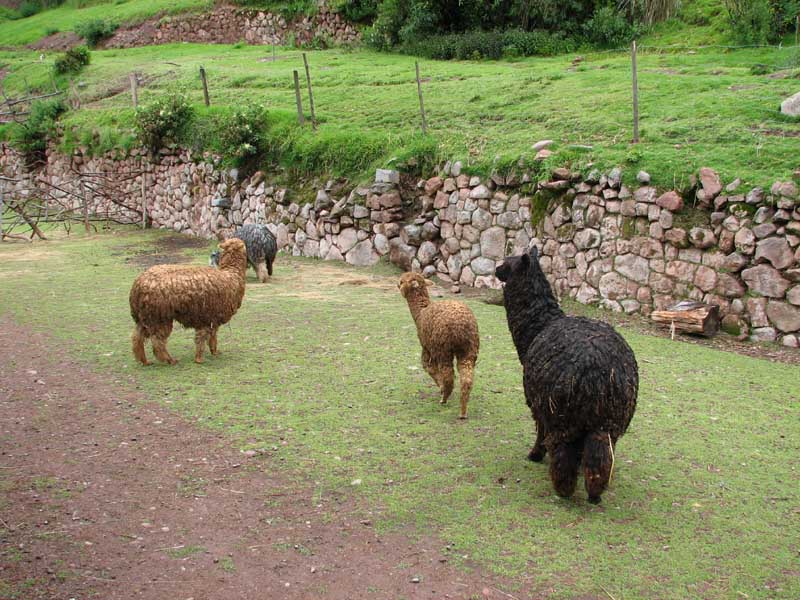
We actually got to sleep in this morning – our excursion did not start until 9am . Our first stop was at Puka Pukara, a place near Sacsayhuaman, that we had not visited the day before. We didn't stay long – we didn't even get out of the car. Our next stop was at an alpaca ranch. There were alpacas, llamas, and vicuñas. Alpaca wool is used for all sorts of clothing – it is almost unsurpassed in terms of warmth and breathability for its weight. Vicuña wool is actually better, but it is so cost-prohibitive that it does not get used much.

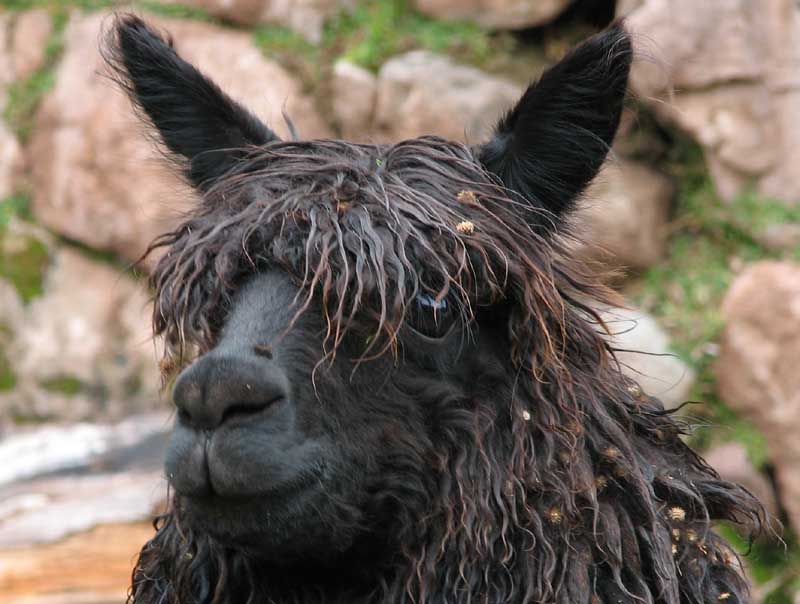
We got out and walked through the pens. The alpacas really like alfalfa, and once our guide, Gilmar, took out a handful, they rushed him. It made our dogs at snack time look tame by comparison. There was one black alpaca that kept whining, quite loudly, every time Gilmar turned away or fed any other alpaca. After going through the pens, we saw how the wool gets turned into clothing. The wool gets washed with a special substance so that it gets clean but can accept coloring. Then it is colored in hot pots of water with natural dyes. Then people weave the wool into extravagant patterns for shawls or other clothing. Items like socks, sweaters, etc. are machine made with artificial colors. Bright reds and blues, for example, are not natural colors for alpaca wool.
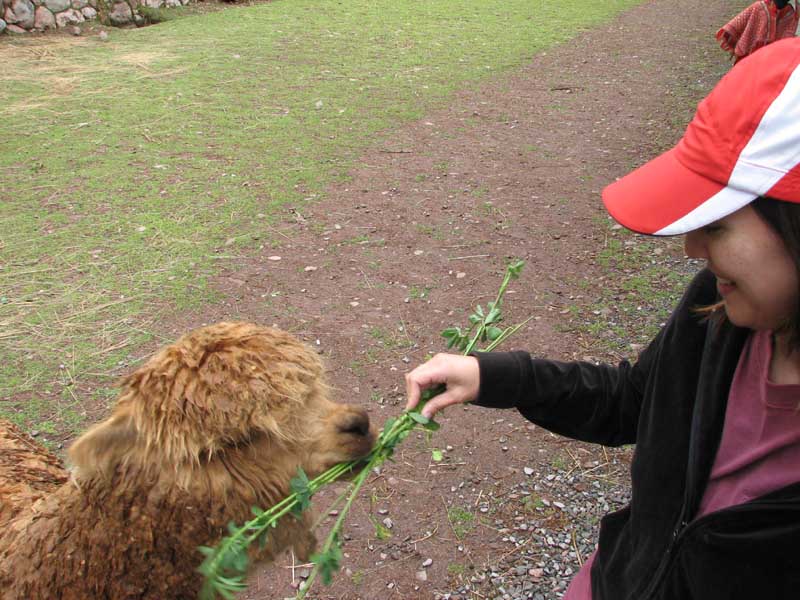
Not surprisingly, there was a store past all of this, and we were sufficiently intrigued to buy some stuff. Crystal bought a scarf and Justin bought a sweater. Then we looked outside and saw that the dark skies had become even darker, and that it had begun to rain. So Crystal bought some mittens and Justin bought a beanie. We got back in the car and drove East and then North until we reached Pisac in the Sacred Valley. The Sacred Valley is much lower than Cusco, at "only" 8500 feet. It is basically over the mountain range that Cusco sits in the middle of. Once you get over the mountains to the East of Cusco and the Sacred Valley, you quickly descend into the jungle, near the Manu biological reserve.
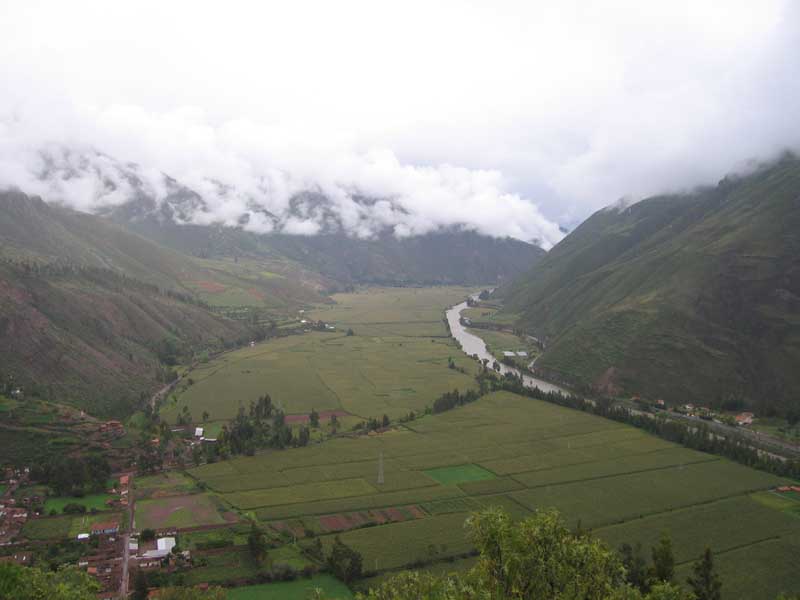
Pisac is a big tourist trap. We saw no signs of any business or industry besides a large swap meet full of trinkets, music, t-shirts, and other low cost items. The food, however, looked very good. There were all kinds of spices, fruits, and the largest corn we've ever seen. After leaving Pisac, we headed west towards Ollantaytambo, an ancient fortress at the west end of the Sacred Valley. The fortress was giant, and in fairly good shape. It's referred to as a fortress, but was much more. The intricate stonework and several of the buildings indicate that it was intended to be a very special area. For example, there are two valleys that Ollantaytambo lies at the end of, and the sun comes directly into Ollantaytambo on only June 21 from one valley and only December 22 from the other valley. There are theories that the entire structure was designed to resemble a llama, with the important room being the eye.
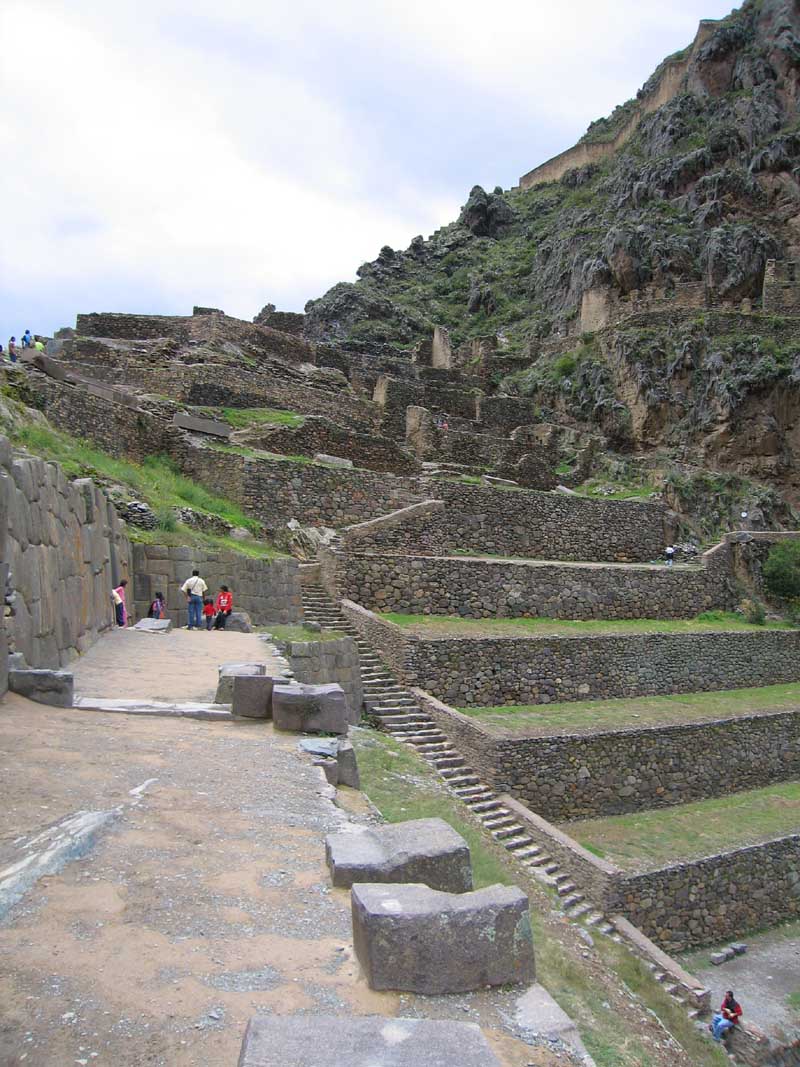
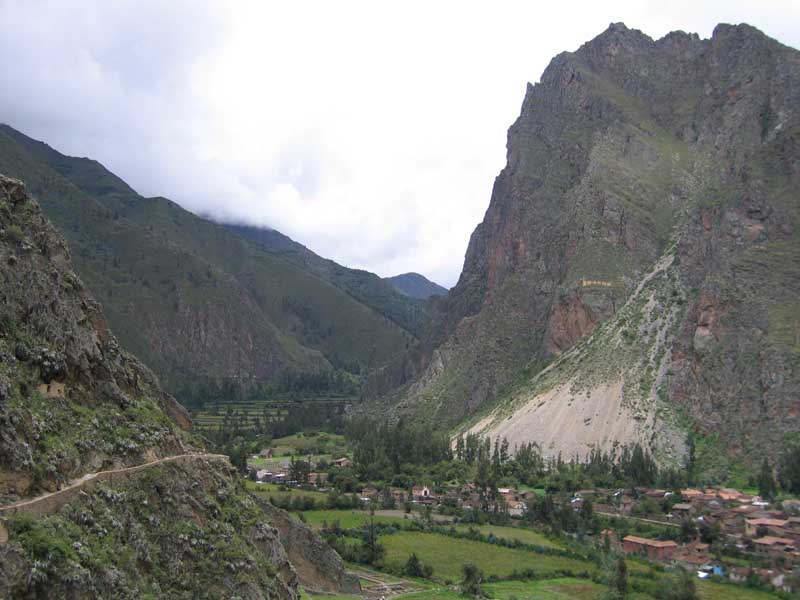
We got a little winded going up to the top – we had to stop a couple of times. We did feel much better than we did in Cusco, however. From the top we could see a carved Inca head on the side of a nearby hill. Supposedly it was designed so that in the middle of the day, the shadows on the mountain make it appear as though the Inca is asleep. Ollantaytambo was in fairly good condition because it was one of the only places where the Incas defeated the Spanish. Being at the end of a long valley, and on a raised position, the Incas could see the Spanish coming from far away.
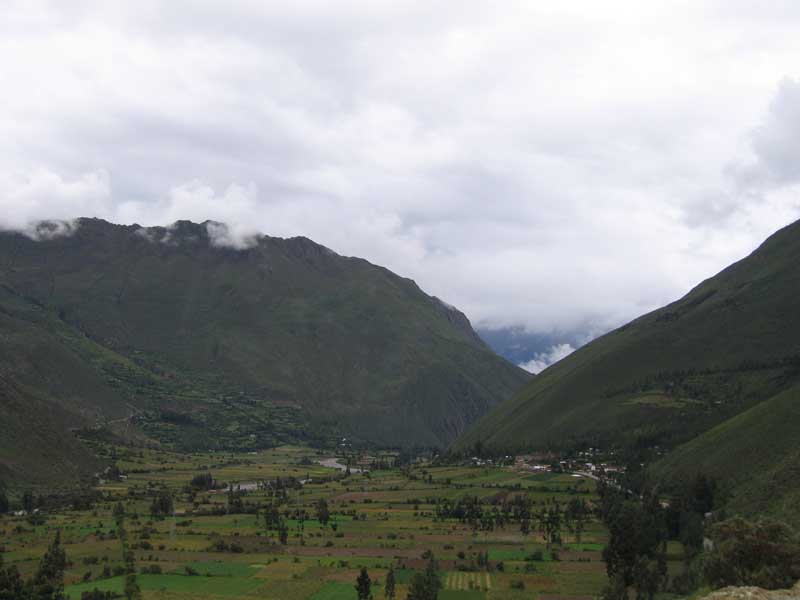
We finished walking around and then headed back East, stopping at the Sol y Luna Lodge, an oasis out in the middle of nowhere between Ollantaytambo and Pisac. The Lodge was very quiet and peaceful, with large grounds for the low number of rooms. Gilmar told us there were only about 25 rooms at the Lodge, so there was never more than 50 guests. We were there simply for their buffet lunch, which was quite good. While wearing his Alpaca beanie to keep his head warm, Justin chowed down on some alpaca steak to keep his stomach warm. We drove back to the hotel straight from the Lodge.
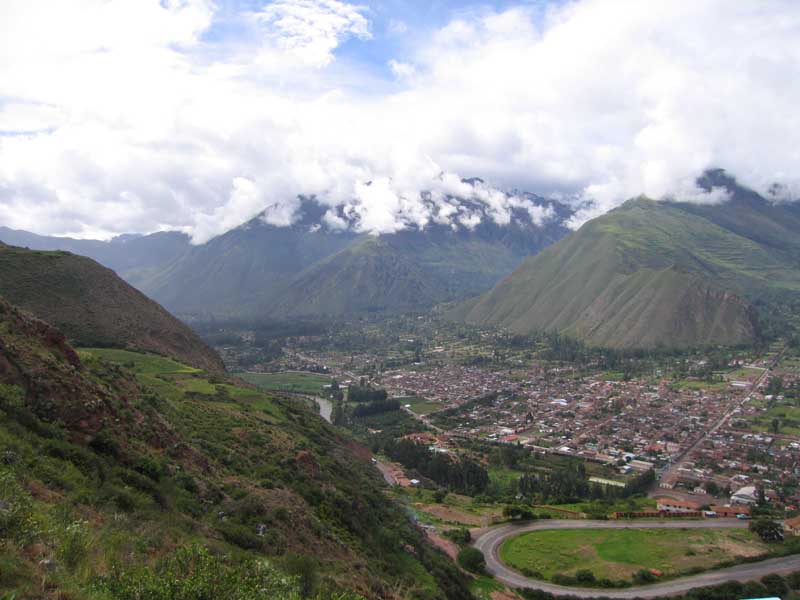
Back at the hotel we did laundry. We have quite a bit less clothing than last year, and most of the clothing is shorts, pants, and t-shirts, so our laundry bill was a fraction of what it cost in Singapore last year. At around 6pm we found out that there would in fact be a strike the next day, and that no trains would be headed to Machu Picchu. We were disappointed, and a little irked that they hadn't changed our itinerary around so that we went to Machu Picchu first, then come back to Cusco. The strike date had been planned for a long time, and they knew what our itinerary was. Anyway, we went out and bought some postcards and walked through some of the shops in Cusco. We didn't feel like going out for dinner, so we just ordered some room service, watched some television, and went to sleep.